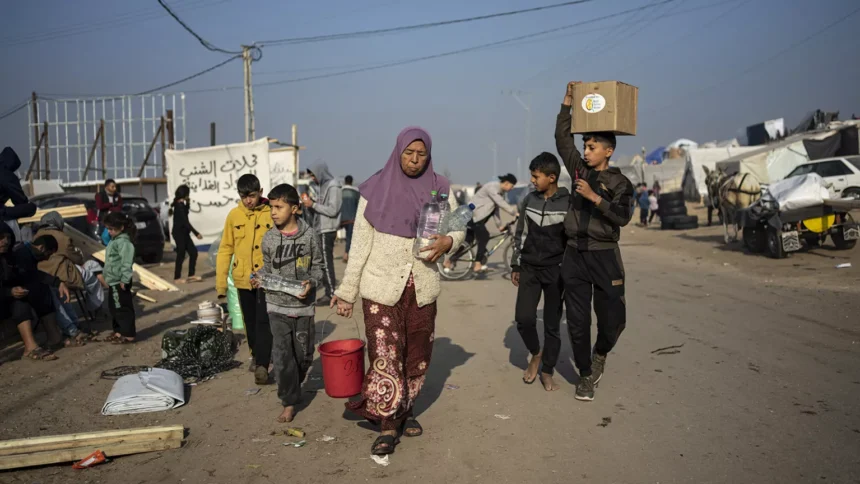Introduction
Israel has issued one of the largest evacuation orders to date in Gaza City, marking a critical escalation in the ongoing conflict. This directive affects vast areas already devastated by prior airstrikes, compelling thousands of Palestinians, many already displaced, to seek refuge once again. The order follows claims by the Israel Defense Forces (IDF) that certain key locations in Gaza are being used as Hamas command centers.
Major Areas Targeted in the Evacuation
Among the facilities included in the IDF’s evacuation notice are the Islamic University, Al-Shifa Hospital, and multiple former schools. While Israel claims these sites are being exploited by Hamas, humanitarian organizations argue they currently shelter thousands of civilians, including children and elderly people. The logistics of evacuating these zones amid active conflict raises concerns over potential mass casualties.

Global Voices Against Expansion
Former Israeli Prime Minister Ehud Olmert broke ranks with the Israeli leadership, openly criticizing the expansion of the military campaign. In a BBC interview, he emphasized growing dissent among Israeli citizens and military officials. Olmert condemned the humanitarian toll and called for immediate cessation of hostilities, labeling the situation in Gaza as “unforgivable.”
Mounting Humanitarian Crisis
The humanitarian conditions in Gaza are deteriorating rapidly. A UN-backed report highlights that 2.1 million Palestinians are at critical risk of famine. The World Health Organization warns of long-term effects on Gaza’s population due to food insecurity, lack of clean water, and inadequate healthcare access.
Israel denies intentionally starving Gaza. Government spokesperson David Mencer claimed, “There is food in Gaza,” attributing the hunger crisis to Hamas. However, aid agencies argue that a 10-week blockade—cutting off food, medicine, and fuel—has severely limited relief efforts.
Hostage Deal and Ceasefire Negotiations
Despite faint optimism for a US-sponsored ceasefire proposal, both parties remain firm in their positions. Hamas demands a permanent ceasefire and Israel’s withdrawal from Gaza, while Israeli Prime Minister Netanyahu insists the war will continue. Meanwhile, 67 former hostages have signed a public appeal urging Netanyahu to strike a deal with Hamas, even at the cost of halting military operations.
Public Sentiment in Israel
Recent polls from Channel 12 News reveal that 68% of Israelis support a hostage deal, even if it means ending the war. This contradicts Netanyahu’s hardline approach, indicating a growing public divide on how to proceed. An Israeli official stated, “Despite American determination, there is no change in the PM’s position.”
Casualty Figures and Ongoing Attacks
Since Israel resumed its aerial campaign on March 18, over 2,799 Palestinians have reportedly been killed, with 80 casualties on a single day. Since the conflict began on October 7, 2023, following a Hamas-led cross-border attack, more than 52,928 people have died in Gaza, according to its health ministry.
Conclusion
The humanitarian crisis in Gaza is worsening under the weight of continued military action, resource blockades, and delayed diplomatic resolutions. With growing domestic and international pressure, the future of the conflict—and the safety of millions—remains uncertain. World leaders, humanitarian groups, and affected civilians continue to call for urgent de-escalation and the safe passage of aid.
Stay informed on the latest developments by reading our Middle East Conflict Timeline.









